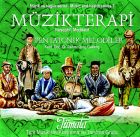Buy or gift a stand-alone digital subscription and get unlimited access to dozens of back issues for just £18.99 / $18.99 a year.
Please register at www.exacteditions.com/digital/cornucopia with your subscriber account number or contact subscriptions@cornucopia.net
Buy a digital subscription Go to the Digital EditionHalf the people of China’s far west are not Chinese at all – they are Uighurs, their language Turkic, their religion Islam. This 36-page report on the Uighurs of Xinjiang highlights a poor, proud people subsisting in a harsh desert under alien rule. Photographs: Ashley Gilbertson
THE TURKS OF CHINA
Xinjiang, formerly known as Chinese Turkestan, is home to some ten million people of Turkic descent. Their culture, language and religious beliefs still owe more to central Asia and the northern steppes than they do to China itself. As distant from the China Sea as it is from the Mediterranean, Xinjiang is a place of wild terrain and extreme climate, surrounded by high mountain ranges. By Christian Tyler, author of Wild West China: The Taming of Xingjiang
In the centre of the Asian landmass, enclosed by towering mountain ranges and scoured by desert winds, lies a strange, wild place called Xinjiang. Until a few years ago, it was forgotten by the world.
The native inhabitants of this wilderness are citizens of the People’s Republic of China. But they are not Chinese. You can see it in their faces. You can see it also in the names of
their landmarks: a mountain is tagh, water is su, lake is kul. Their language is Turkic, their script Arabic, their architecture Persian and their religion is Islam.
To the puzzled visitor, it seems as if, during the great westward steppe migrations of 1,500 hundred years ago, these proto-Turks turned south too soon and ended up on the wrong
side of the mountains. The land they chose seems to us fierce and barren, but there are fertile oases beneath the mountains and round the desert shore. For centuries these Turks were left alone to enjoy their new life as farmers. But as empires expanded and national boundaries became fixed, the outside world pressed in. Today, while
their cousins on the western side of the Pamirs have escaped from their Soviet masters, they find themselves chafing under the iron hand of Beijing.
Rediscovered by European adventurers in the latter half of the nineteenth century, Xinjiang was closed again from the 1930s until the late 1980s. Nobody was there to report on the plight of China’s Turks as they were hammered into a Chinese mould along with Mongolians and Tibetans on either side of them.
So remote is this province of China that its ancient Turkic capital, Kashgar, is as far from Beijing as it is from Ankara. Yet the Xinjiang Uighur Autonomous Region (to give it its official name), formerly Chinese Turkestan, comprises a sixth of China’s territory, while containing a mere sixtieth of its population.
Of its twenty million people, about ten million are Turkic, mainly oasis-dwelling Uighurs, with smaller numbers of Kazakhs and Kyrgyz. There are another million or more Mongols, Hui (Chinese Muslims), Tajiks and others. Officially, the Han Chinese population is 7.5 million. In reality, it is probably nearer twelve million.
Not only remote, Xinjiang is also a country of extremes. Its mountains are among the highest in the world, soaring to 25,000 feet (7,600 metres), while the Turfan Depression is below sea level, one of the deepest pockets on earth. The Taklamakan Desert, which fills the Tarim basin, is the second largest sand desert on the globe. So dry is the region that only one of its rivers, the Irtysh in the far north, ever finds its way to the sea. The rest are swallowed by the desert sands. Temperatures in the Taklamakan swing from minus 50 to plus 50 degrees centigrade. Howling sandstorms batter the traveller along the desert margins, and the oasis towns around its shores are muffled in a pall of dust for days on end. Dwellers on the less-populated southern side of the desert fight a constant battle against the inexorable advance of the great dunes.
For centuries the chief influences – peoples, cultures, religions – came not from China but from the far side of the mountains. Xinjiang’s history defied its geography. The Chinese began their incursions during the Han dynasty (206bc–220ad), mainly to get the horses they needed to keep on terms with their steppe enemies. It took many false starts and reverses before the Chinese succeeded in mastering the people they regarded as the ‘barbarians’ of the far west. Not until the mid eighteenth century did they manage a credible military conquest. It took another 200 years, and the Communist revolution of 1949, to achieve complete administrative control. Even today, Xinjiang is not entirely subdued.
Though Turkish truffles resemble their more famous European cousins in appearance, their fragrance – mellow and delicately fruity – is far milder.
More cookery features
Is this fantastic landscape about to become the new hotspot for wine-lovers? In Cornucopia 31 Kevin Gould heads for the oldest vineyards on earth to find out. Photographs by Frits Meyst
Born into penury, he rose to be revered across Europe. Yet the Ottoman Empire’s youngest ever grand vizier is all but forgotten at home. David Barchard charts the dramatic career of the master strategist Âli Pasha
When spring arrives in the high passes of the Taurus Mountains, a dazzling display of flowers comes out to greet it. Story and photographs by Martyn Rix.
SPECIAL OFFER: order three beautiful garden-themed issues, including this one, for only £60. List price £102
Her life is the stuff of fairy tales. Omar Khalidi tells the story of the princess who captivated Cecil Beaton

TÜMATA The Traditional Turkish Music Research and Promotion Society, Dr Rahmi Oruç Güvenç

TÜMATA The Traditional Turkish Music Research and Promotion Society, Dr Rahmi Oruç Güvenç

Cornucopia works in partnership with the digital publishing platform Exact Editions to offer individual and institutional subscribers unlimited access to a searchable archive of fascinating back issues and every newly published issue. The digital edition of Cornucopia is available cross-platform on web, iOS and Android and offers a comprehensive search function, allowing the title’s cultural content to be delved into at the touch of a button.
Digital Subscription: £18.99 / $18.99 (1 year)
Subscribe now